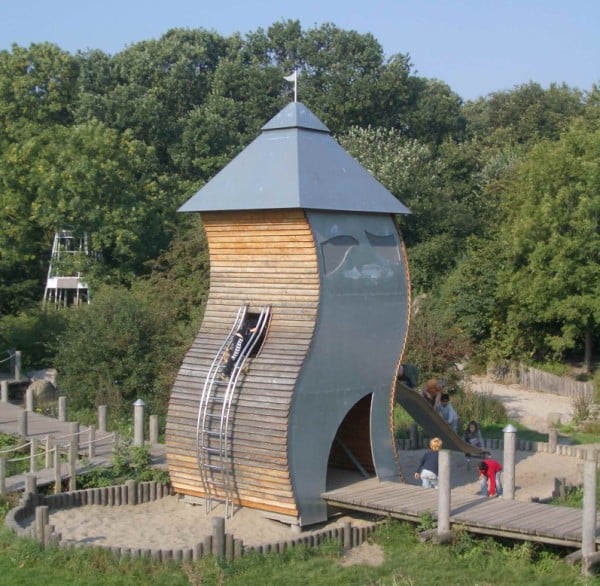Key Points
- What I have learnt from my research and experts is the importance of social play. Kids playing with kids. Learning how to be social beings, how to compromise, respect others, play by the rules of a game, get messy, share imaginative ideas and be creative together.
- We need to adapt our social infrastructure to the realities of risk aversive parenting and declining independence for middle years kids. Just making playgrounds prettier, more natural or more accessible will not be enough
- Play Yards are the vital neighbourhood facility to complement school, formal care and regional destination parks
Meet the Presenter
Tanya Vincent is a keynote speaker at Gowrie NSW OSHC Seminar Day – Inquiry, Inspiration and Innovation happening in April. In this interview, Tanya discusses The Play Yards in Copenhagen as innovative places that support outdoor play, social connection, community and belonging for children.
Can you share a little about who you are, where you are from and how you came to be interested in this concept of the Play Yards?
I am an architect by training and have been practising urban design for about 25 years. Currently, I work on the policy, planning and design of transport projects to make better local places. But for many years, and when I first got involved in play yards, I designed residential neighbourhoods and housing and planned precincts. I came to play yards with both professional and personal experiences.
In the early 2000’s I saw in the planning documents the volume and extent of high-density neighbourhoods coming down the line. From my own experience raising kids without a backyard, I realised how this would challenge the pre-conceived ideas of an Australian childhood and how communities’ needs would change.
I also discovered that being a ‘good parent’ in Australia meant chauffeuring and chaperoning kids in parks and playgrounds well into their early teens, way above the age a citizen should be enjoying independence in their local neighbourhood. I discovered that despite everyone’s efforts to raise active, healthy, socially engaged kids, there are so many more hours in the day and days in the year than can be covered by school and formal care. And that individual dilemma compounds at a societal scale into the statistics about childhood obesity, loneliness, and screen dependency.

So when I came across a Play Yard when visiting Copenhagen, the light bulb went on. This is the type of social infrastructure to meet the modern needs of Australian families. I received a Churchill Fellowship in 2011 to study play yards, completing a comprehensive research project of over 37 staffed facilities mainly in Copenhagen but also in London and Stockholm.
For you, when you think of the importance of play for children in the school years what comes to mind?
I want to say straight up, I am not a play expert or trained educator. But what I have learnt from my research and experts is the importance of social play. Kids playing with kids. Learning how to be social beings, how to compromise, respect others, play by the rules of a game, get messy, share imaginative ideas and be creative together. That’s why the loose parts and presence of friends in Play Yards is crucial for making a local facility appealing for daily use. It is also why too much focus on fixed equipment or fancy landscape design are often red herrings. This is the big difference between a regional, destination playground for the occasional planned visit and a Play Yard, which is more like a backyard for everyday, casual and independent use.
When you began researching the Play Yards of Copenhagen, what were some of the surprising things that you noticed?
I went into the research with my designer’s hat on, thinking the recipe was in the location, design and things. What I discovered was an enormous range of sizes, locations and layouts so that was not the answer. The core was the relationships between the play yard staff and the parents and kids. Their pedagogy was about finding ways to support families and kids in whatever way was right for that neighbourhood or individual with mutual respect. It was not about pathologizing people as cases or policing users, but welcoming everyone as they went through that life stage of parenthood and childhood. The playground, events and bikes were just the drawcards that attracted local families to socialise and support each other.
What do you see as the benefits of this approach that could be translated into an Australian context?
Australian cities, towns and suburbs are getting denser. Even new detached houses these days often have very little useable open space. Whether by choice or circumstance, many families are raising kids without a large private backyard. But the key planning assumption behind public space for children has not changed since the 1960s– free-roaming kids playgrounds for occasional visits escorted and supervised by unwaged housewives because every day, outdoor activities occur in the backyard.
We need to adapt our social infrastructure to the realities of risk aversive parenting and declining independence for middle years kids. Just making playgrounds prettier, more natural or more accessible will not be enough.
Australia has adopted or invented other forms of social infrastructure to meet changing community needs, such as community gardens, dog parks and men’s sheds. Not it is time to focus on the needs of families and kids living in modern Australia. Play Yards are a vital neighbourhood facility to complement school, formal care and regional destination parks
For the Seminar in April, what are you looking forward to sharing with the group?
The photos and video help show what Play Yards look and feel like and how important the staff are to making the facilities successful and popular. Also hearing from the group what aspects of Play Yards they think will resonate with Australian families and any tips on making them work here.


